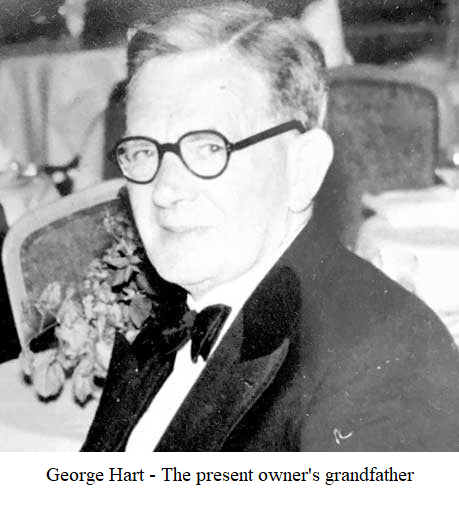Mention Valentine’s Day and the first thing that comes to the minds of those around you, is love, romance, red roses, and gifts that convey deep feelings to a significant other. However, while this is how today's people see Valentine’s Day, it has a history that goes back centuries, that is filled with everything but romance!

Where And When Did Valentine’s Day Originate?
According to ancient records, several St. Valentine’s died on February 14, at a time when it was common to persecute Christians. At least two of these Christian martyrs were executed by decapitation on that day, during 260 to 270 AD, when Roman Emperor, Claudius Gothicus reigned. A feast was held in celebration of these executions and became known as St. Valentine’s Day.
These facts are known today, because of an order of Belgian monks who, for three centuries, collected and recorded every bit of evidence regarding the lives of saints.
These monks were known as Bollandists, after a Jesuit scholar named Jean Bolland, who started printing “Acta Sanctorum,” (“Lives of the Saints”), made up of an enormous 68-folio volumes in 1643. Since that time, following generations of monks carried on with the work until 1940 when the last volume was published.
Every iota of information on every saint during that time was found by the Brothers, who then printed the records organised according to that feast day.
Who Were The Valentine Martyrs?
The volume surrounding February 14, contains the recordings of a few “Valentini,” as well as the information regarding the earliest three, who died during the 3rd century. According to records, the earliest Valentinus died along with 24 soldiers, somewhere in Africa. Sadly though, as thorough as they were, the Bollandists were unable to dig up any further information on him.
Unfortunately, the only information that was sometimes left behind was the name of the saint and the date that he died, so extraordinarily little is known about the other two Valentine saints.
Emperor Gothicus arrested Valentinus, a Roman priest, and put him in the custody of aristocrat, Asterius, who made the mistake of getting the preacher to talk. Valentinus continued talking about how Christ led the pagans out of the darkness and into the light of salvation and truth. Asterius was so taken with the preacher's talks that he made a deal with him: If Valentinus could use his powers to cure the blindness of Asterius’s foster daughter, he would become a Christian. The preacher placed his hands on the girl’s eyes and said: “Lord Jesus Christ, enlighten your handmaid because you are God, the True Light.”
According to medieval legend, it was that easy to get the child to see again, and true to his word, Asterius and his entire family converted to Christianity.
Emperor Gothicus was livid when he heard the news, and ordered that they all be executed, with Valentinus being the only individual to be decapitated.
However, a devout widow took his body and buried it on Via Flamina, the site of his martyrdom, and the ancient road that stretched from Rome to present-day Rimini. A chapel was built over the remains of the saint at a later stage.
Saint Valentine Was Not A Romantic
According to records, the 3rd century Valentinus served as a bishop of Terni, Italy, in the province of Umbria. As with the other Valentinus, the bishop supposedly also healed a potential convert’s son by healing his illness. This story is almost like the first one, with the bishop also being decapitated, and his body laid to rest on the Via Flaminia.
The Bollandists suggested, and highly likely so too, that instead of two Valentines being beheaded, there are two different versions of the same saint’s story that appears in both Terni and Rome.
The fact remains though, that whether Roman, Umbrian, or African, none of the three Valentines appears to have had romantic tendencies.
Medieval legends that are repeated in today’s media, spoke of St. Valentine carrying out Christian marriages, or secretly passing lover’s notes between Christians imprisoned by Gothicus. Other stories too, told of his supposed romantic involvement with the blind girl whose blindness he had apparently healed. However, according to the Bollandists, these stories from medieval times had no basis in the history of the third century.
Undeniably, there is a wide variety of monasteries and churches throughout medieval Europe, that says that their treasuries contain a piece of St. Valentine’s skull, like the Santa Maria in Cosmedin, Rome, that has an alleged entire skull on display.
Why Do We Celebrate Valentine’s Day Today?
The connection between love and St. Valentine probably occurred about a thousand years or so after the death of the martyr, when the author of “The Canterbury Tales,” Geoffrey Chaucer, likened the feast of Saint Valentinus in February, to birds mating.

In Chaucer’s day, birds seemingly paired off in February to produce eggs, which soon resulted in nature-minded nobility in Europe to start sending romantic notes during February, the bird-mating season. Take the French Duke of Orleans, for instance, a prisoner in the Tower of London for a few years, who sent a letter to his wife in February 1415, calling her his “very gentle Valentine, and stated that he was “already sick of love,” which actually meant that he was “lovesick.”
The English enjoyed the idea that February was the month for mating, so much so, that the lovestruck Ophelia in Shakespeare, described herself as Hamlet’s Valentine.
In conclusion
Both Englishmen and women in the following centuries started using February 14, to write verses of love to their romantic objects. With industrialisation came mass-produced cards illustrated and adorned with all things romantic and love-filled poetry. Following closely, were the chocolate manufacturers like Hershey’s and Cadbury’s that started marketing sweets for sweethearts, on Valentine’s Day.
These days, shops in England and the world over, proclaim Valentine’s Day as the annual day of love, with hearts, chocolates, and gifts of all types or even engagement rings for that very special person.



